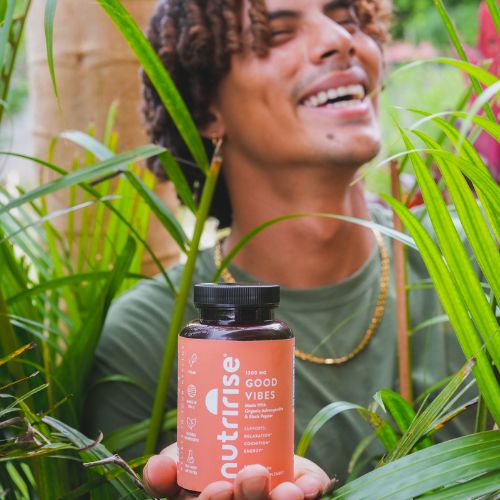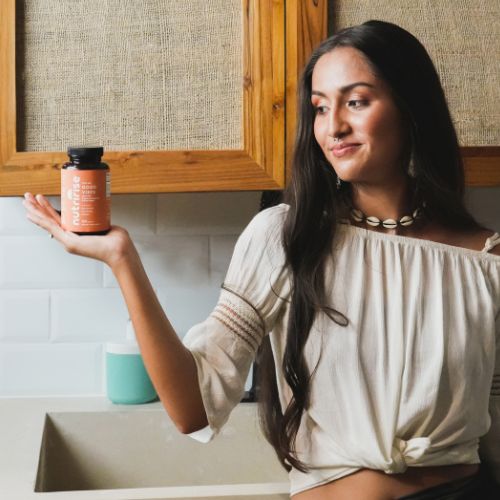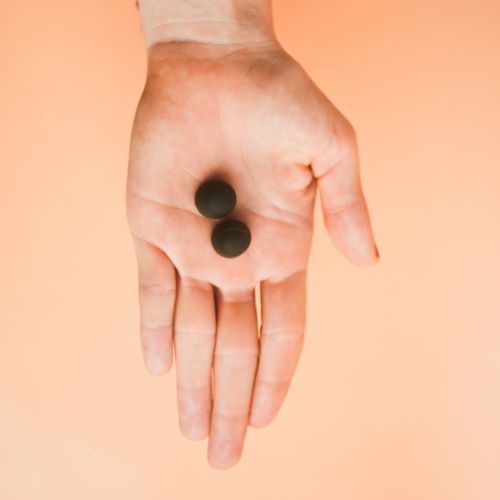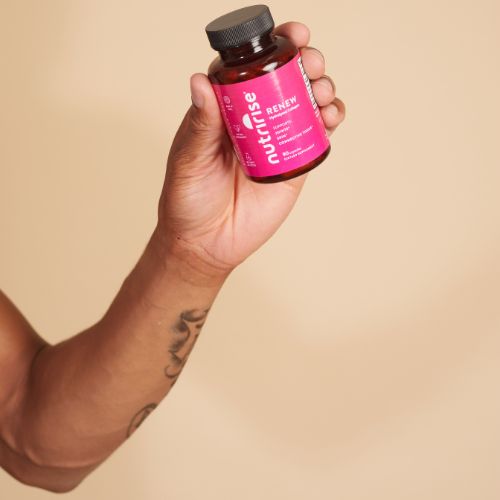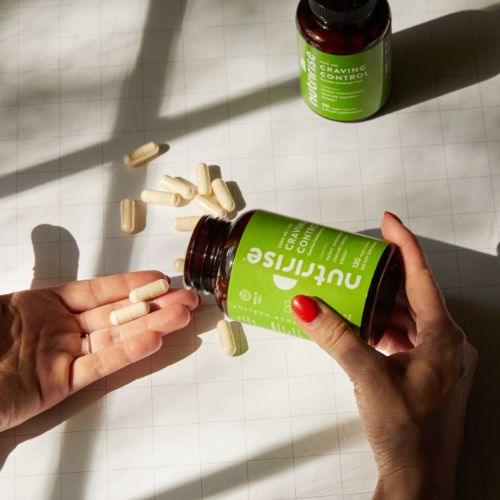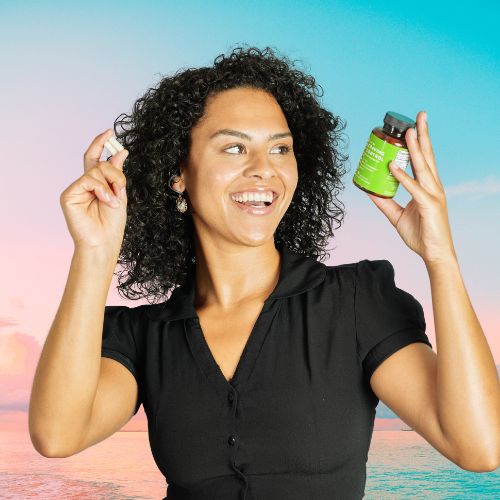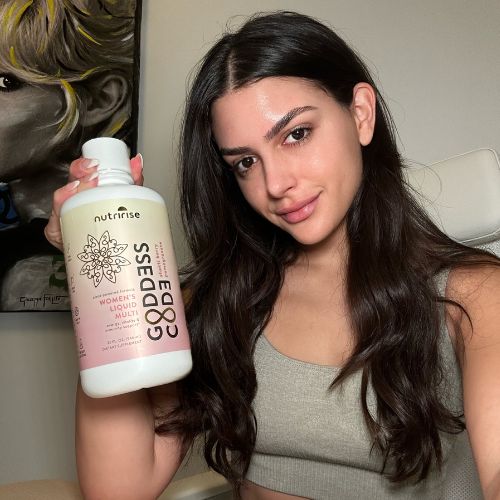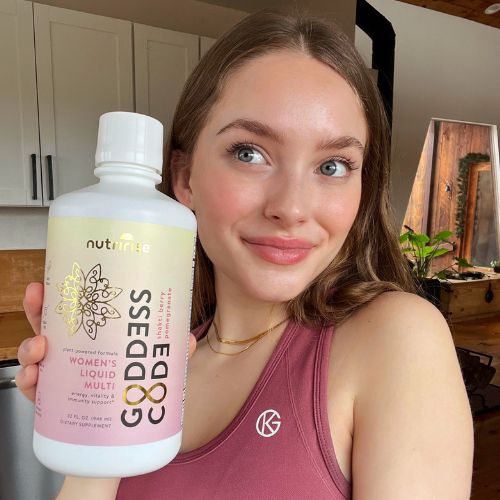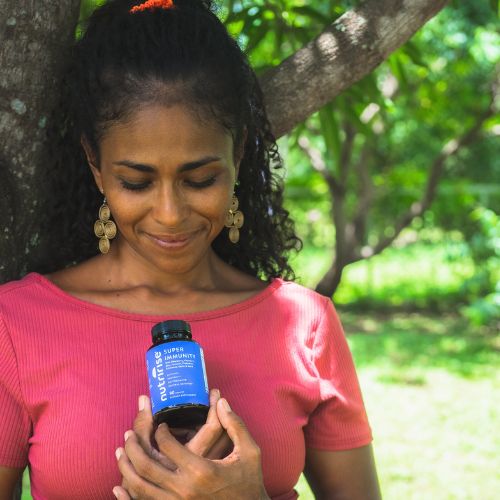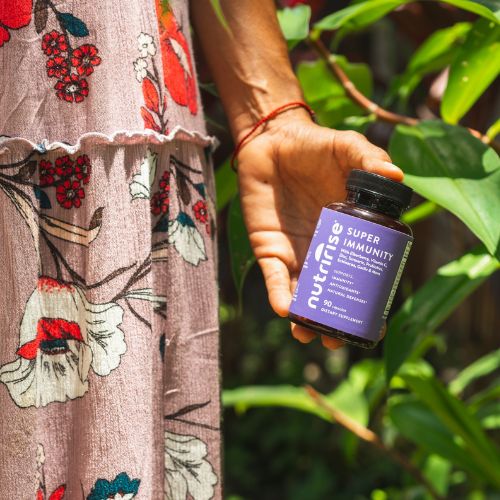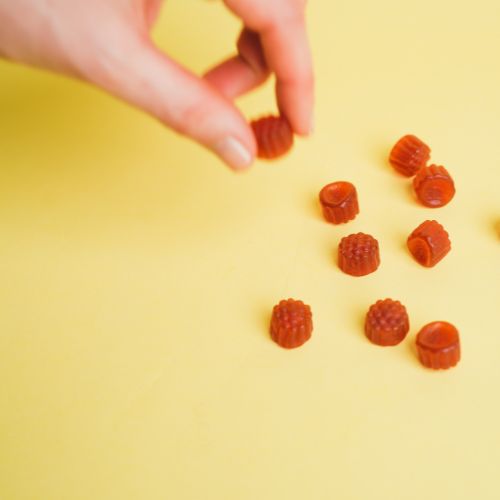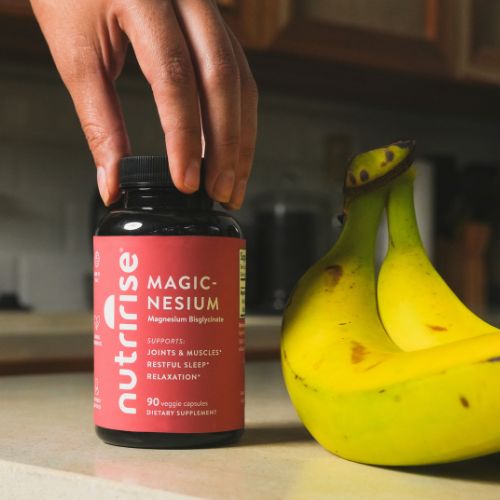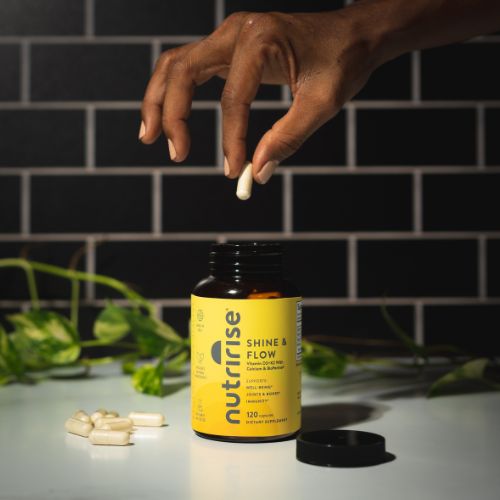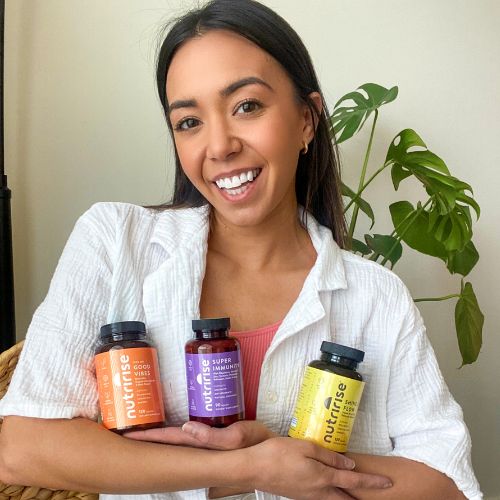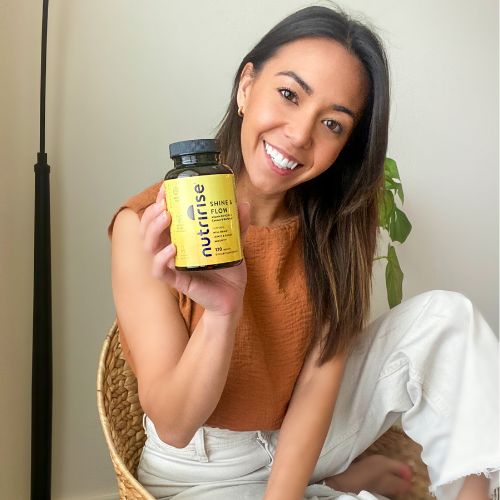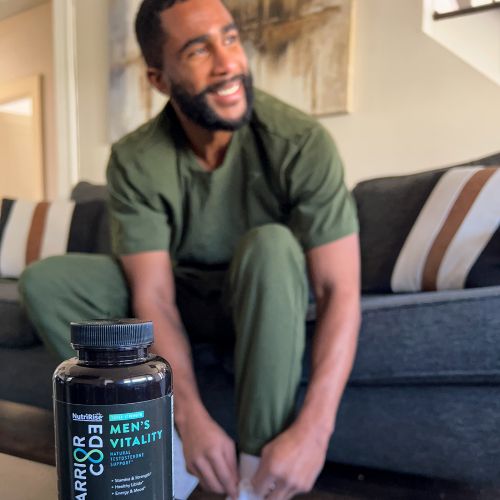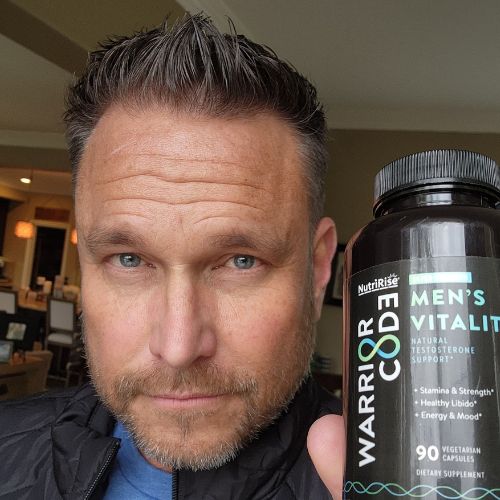What is collagen?
Your body is mainly made up of proteins, lipids, and water. Proteins are its main building blocks, and the most abundant one is collagen (1). It makes up about a third of all the proteins in the human body.
Collagen acts as the main structural component of the connective tissues found in pretty much every part of your body. Cartilage, bones, ligaments (bands that hold your joints together), tendons, blood vessels, and skin are made almost entirely of connective tissue.
Most organs also have a submucosal lining made of connective tissue that gives them support. The primary function of connective tissue is to “glue” other tissues together and support their structure.
Collagen ensures this function by aggregating with other collagen molecules to form a triple helix structure called a fibril.
Collagen fibrils are strong enough to help connective tissue bind other tissues together, keep organs in place, and give them a fibrous “skeleton” for support.
Yet, there are different types of collagen and thus different types of fibrils in the human body. So far, there have been 28 types of collagen discovered (2).
Scientists distinguish them by their amino-acid sequence and fibril structure. They are named using Roman numerals such as I, II, V, X, etc. In humans, the most abundant one is type I collagen, which makes up 90% of your body's collagen protein (3).
Why does joint degeneration cause pain?
The most common cause of joint pain is osteoarthritis, a degenerative disease. It results from progressive cartilage breakdown, as suggested by the “wear and tear” aging theory (4).
The function of cartilage is to cushion the bones and prevent them from rubbing against each other when you perform physical movements. It also acts as a shock absorber and reduces stress on the rest of the skeleton.
As the layer of cartilage gets worn out, the joint’s capsule, surrounding tendons, and ligaments stretch, leading to pain. Therefore, the whole joint is affected by osteoarthritis and not just the cartilage.
In addition, bones are susceptible to pain. The friction between your bones increases as you lose cartilage which causes even more pain and blocks the normal function of the joint.
The cause of the “wear and tear” process is usually repetitive stress on the joint that leads to inflammation. Due to the inflammatory process, the cartilage becomes less elastic and more prone to damage.
Repetitive stress can be due to overuse, increased body weight, or frequent sports injuries.
Women and those with a family history of osteoarthritis are more susceptible. Age is also a risk factor since the amount of collagen your body produces decreases in older adults.
Yet, scientists say that developing osteoarthritis is not an inevitable part of aging (5). Instead, you can prevent or minimize the occurrence of osteoarthritis by taking care of your joints.
Looking after your joints
The best way to deal with osteoarthritis and joint pain is to make necessary lifestyle changes first instead of just suppressing the pain. Options include improving your body composition, physical activity, diet, and other natural remedies.
Physical activity
Being physically active daily can help relieve joint pain in two main ways - by increasing muscle mass and strength and reducing your total body weight.
Increasing muscle mass and strengthening the muscles that support your joints will improve your overall mobility and reduce pain.
Although physical activity may feel like it’s causing even more pain, scientists have confirmed the benefits in clinical trials.
According to one study, weight-bearing treadmill walking in 31 obese individuals led to significant improvement in knee osteoarthritis symptoms (6).
- Remember that moderation is essential, and putting too much load on your joints can have the opposite effect.
- If you are overweight or obese, extra physical activity can also help you lose excess fat, if you have any, and thus reduce the stress on your joints.
- Researchers also report that losing as little as 10% of body weight can dramatically benefit osteoarthritis symptoms, increase mobility and lower joint pain (7).
Losing body fat has many other benefits, such as improved lipid profile, cardiovascular health, better insulin sensitivity, lower blood pressure, and reduced whole-body inflammation (8)!
Natural anti-inflammatory aids
Some herbs and plant extracts can help ease the symptoms of joint pain by reducing the inflammation that causes it.
The most potent ones widely used for treating arthritis symptoms include Curcuma Longa (turmeric), Zingiber officinale (ginger), and Boswellia Serrata.
These herbal remedies have been used in traditional Indian and Chinese medicine for thousands of years.
Many studies also show that their beneficial effects may dramatically improve the symptoms of joint discomfort.
- A meta-analysis of 16 randomized controlled trials reported that turmeric could relieve knee pain as effectively as NSAIDs (9). Besides, the extract had a 12% lower risk of adverse effects than NSAIDs despite their similar effectiveness.
- Another meta-analysis investigating the efficacy of ginger on almost 600 participants reports that the extract can significantly reduce symptoms of pain due to osteoarthritis (10).
Supplementation with Boswellia extract for at least four weeks has also been shown to help relieve symptoms in a meta-analysis that included data from more than 500 patients with osteoarthritis (11).
Diet and dietary supplements
Although the human body can produce collagen, consuming more protein in your diet can help support collagen production and connective tissue regeneration.
Your body doesn’t break down collagen completely (aka to amino acids) but to larger remnants called peptides. Peptides are protein-like structures made of short chains of several amino acids.
Your body can absorb peptides easily as their small molecular size allows them to penetrate skin and intestines faster to enter the bloodstream effectively.
In addition, lab studies report that taking hydrolyzed collagen peptides may help improve the production of hyaluronic acids inside the joint (12). The fluid reduces friction inside the joint, lubricates the cartilage, cushions it, and protects the surfaces from wear and tear.
Therefore it is vital to consume enough protein, which contains all the essential amino acids.
That includes all protein from animal sources and some plant sources, although the balance of the amino acids in plant protein may not be optimal. In addition, only animal products can be sources of collagen.
Good dietary sources of collagen are animal skin, cartilage, and tendons. You can also break the collagen down into peptides for easy absorption by boiling it, leading to gelatin formation.
The process is called hydrolyzation and involves the breakdown of the protein molecule. The produced gelatin consists of collagen peptides of various lengths.
Unfortunately, consuming animal cartilage and tendons can be rather unpleasant. Not to mention that gelatin cannot provide optimal absorption of collagen peptides due to their varying lengths.
Therefore, it is better to take supplements with hydrolyzed collagen peptides, which will guarantee proper absorption, and optimal dosage and make the whole process much more enjoyable.
Can collagen supplementation relieve joint pain?
The best way to assess the effectiveness of different collagen supplements is to look at the scientific evidence.
One of the most significant studies, which included 250 older adults with osteoarthritis, revealed that supplementing with collagen peptides had significantly improved their symptoms compared to a placebo (13).
More specifically, the participants were supplemented with hydrolyzed type II collagen, which is also the type of collagen that makes up cartilage. Taking 10g of the supplement daily for six months led to significant pain reduction and improved comfort.
Benefits were most notable in individuals with severe osteoarthritis and those who consumed little or no meat. That’s because all dietary sources of collagen are animal products.
What is more, hydrolyzed collagen supplements can help relieve joint pain in younger individuals too. Another study of active young adults also reported that supplementation with hydrolyzed collagen peptides significantly reduced symptoms of functional knee pain (14).
The participants noticed an improvement in knee pain within 12 weeks of starting supplementation.
Other forms of collagen supplementation, such as native (undenatured) type II collagen, are being explored for their potential benefits against autoimmune conditions.
This collagen type may help reduce inflammation and protect joints in rheumatoid arthritis. The protein may work by reaching the intestines before being denatured, which allows it to interact with the immune cells (15).
This process can increase your immune system’s tolerance toward your own type II collagen in your joints and reduce the symptoms of rheumatoid arthritis (16).
Some animal studies report that native type II collagen can help reduce cartilage breakdown and improve joint health (17).
Preliminary human studies with rheumatoid arthritis patients also report a significant reduction in symptoms of knee pain and comfort after at least three months of supplementation (18, 19).
Added benefits of collagen
Apart from the benefits for joint health, hydrolyzed collagen supplementation can also speed up collagen synthesis and regeneration in other body parts, which are made mostly of connective tissue such as your skin, bones, and tendons.
- Scientists report that hydrolyzed peptide supplementation can improve skin integrity and hydration by stimulating hyaluronic acid synthesis (20).
- Supplementation may also stimulate healthy skin cells’ growth and development, speeding up healing after injuries and trauma (21).
Another way to speed up collagen production in your skin is to add more vitamin C to your diet. Vitamin C plays a crucial role in supporting the proper formation of collagen fibrils. Smokers may need higher amounts of vitamin C in their diet and should consider adding a supplement.
Collagen peptides may further improve mobility and reduce pain in tendon and bone problems.
For example, a small study on 20 participants with tendinopathy revealed that a combination of physical exercise and hydrolyzed collagen supplementation was more effective in inducing tendon repair than activity alone (22).
Collagen supplementation also helped 102 postmenopausal women to increase their bone mineral density by up to 7%, which may help reduce their risk of bone fractures (23).
Postmenopausal women are at an increased risk of bone fractures due to low bone mineral density and osteoporosis. Preventing it is extremely important since fractures can lead to immobility and becoming bedbound.
Which hydrolyzed collagen is best?
Considering that most of the collagen in the human body consists of types I, II, and III, they are also the most commonly found in supplements.
Supplemental type II collagen is usually “chicken-derived” and the primary type of collagen that makes up cartilage. Therefore, its consumption can help your joints' integrity and repair processes for better joint health.
Type I and type III collagen play a crucial role in the structure of your skin, blood vessels, tendons, ligaments, bone tissue, and gut health.
Therefore, supplementation with these types of hydrolyzed collagen is best for maintaining the integrity of your skin, tendons, and bones.
This collagen type is usually called bovine collagen, produced from beef products.
In addition, type I collagen can be derived from fish, called “marine-derived.” Marine collagen is not suitable for people with allergies to seafood.
Other less abundant types of collagen include type V and type X. Type V is found within human skin and other tissues and accompanies type I collagen (24).
Adding type V in supplements with collagen type I and III can increase the benefits for your skin and tendons. On the other hand, type X facilitates bone formation and healing.
Therefore, it is best to take a combination of type I, II, III, V, and X to support the health of your connective tissue and bones simultaneously.
Hydrolyzed collagen powder or pills?
Collagen supplements are available in two popular forms - capsules and powder. Both hydrolyzed collagen capsules and collagen powder work best when taken with a meal. Yet, each has its advantages and disadvantages.
Collagen pills have one significant advantage over powdered collagen - they are easier to take since all you have to do is simply swallow the capsules. There is no need to mix the supplement into anything, and it is much faster to take the pills with just a glass of water.
Collagen supplementation has many benefits, and it's never too late to start taking control of your health.
Give your body the vital proteins it needs with NutriRise Collagen Complex today.







